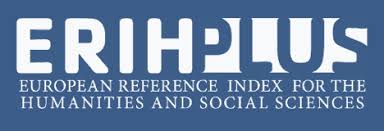№2, 2023
Absolutely all megacities of the world are permanently suffering from traffic crowding, which negatively affects the business environment and the economy as a whole. One of the reasons for the formation of crowding is the lack of adequate transport infrastructure or when it works at the limit of its capabilities. However, in most cases, poor (ineffective) traffic management remains the main cause. Based on this premise, the importance and relevance of the tasks of strategic planning for the development of transport infrastructure and traffic management with the widespread use of digital technologies become obvious. The intelligent transport management center has been operating in Baku for a long time, but the city’s transport system needs effective smart measures. The article analyzes the problem of practical modeling of traffic flows within the existing road infrastructure of the Baku urban agglomeration and, using the example of a pilot project of the IT-company SINAM, proposes an appropriate solution based on the integration platform of intelligent transport infrastructure (pp.32-39).
Aghabayk K., Sarvi M., Young W. (2015) A state-of-the-art review of car-following models with particular considerations of heavy vehicles. Transp Rev 35(1): 82–105
Auberlet, J.M., Bhaskar, A., Ciuffo, B., Farah, H., & Hoogendoorn, SP. (2014). Data collection techniques. In W. Daamen, C. Buisson. Traffic simulation and data: Validation methods and applications, CRC Press, (5-32).
Decree of the President of the Republic of Azerbaijan on improving transport management in the administrative area of Baku city, 15/05/2023, https://president.az/az/articles/view/55379
Barceló J. (2010) Fundamentals of traffic simulation.Models, Traffic Models, Simulation, and Traffic Simulation International Series in Operations Research & Management Science, Springer, Berlin, 145: 1–62.
Bellomo N., Dogbe C. (2011) On the modeling of traffic and crowds: a survey of models, speculations, and perspectives. SIAM Rev 53: 409–463
Daamen W., Buisson C., (2014) Traffic simulation and data: validation methods and applications. CRC Press, West Palm Beach
Elefteriadou L. (2013) An introduction to traffic flow theory. Springer, New York
European Commission Directive 2010/40/EU of July 7, 2010, 15/05/2023,
https://standards.iteh.ai/catalog/directive/f4ba08a2-fab7-4fe3-b8df-4338216dffcc/2010-40-eu
Flötteröd G, Rohde J (2011) Operational macroscopic modeling of complex urban road intersections. Transp Res B Methodol 45(6): 903–922
Hoogendoorn S.P., Bovy P.H. (2001) State-of-the-art of vehicular traffic flow modeling. Proc Inst Mech Eng I J Syst Control Eng 215: 283–303
Knoop V.L., (2016) Traffic and granular flow ’15. Springer, Delft
Lesort J.B., Bourrel E., Henn V. (2003) Various scales for traffic flow representation: some reflections. Traffic and granular flow ’03, Springer, Berlin, 125–139.
Ni D. (2015) Traffic flow theory: characteristics, experimental methods, and numerical techniques. Elsevier, Amsterdam
Sun Y., Work D. (2017) Scaling the Kalman filter for large-scale traffic estimation. IEEE Trans Control Netw Syst
SWARCO: the better way, every day. Official website of the company, 15/05/2023, https://www.swarco.com/
Treiber M., Kesting A. (2013) Traffic flow dynamics: data, models and simulation. Springer, Berlin
Van Wageningen-Kessels F., Van Lint J., Vuik C., Hoogendoorn SP (2015) Genealogy of traffic flow models. EURO J Transp Logist 4: 445–473





.jpg)









